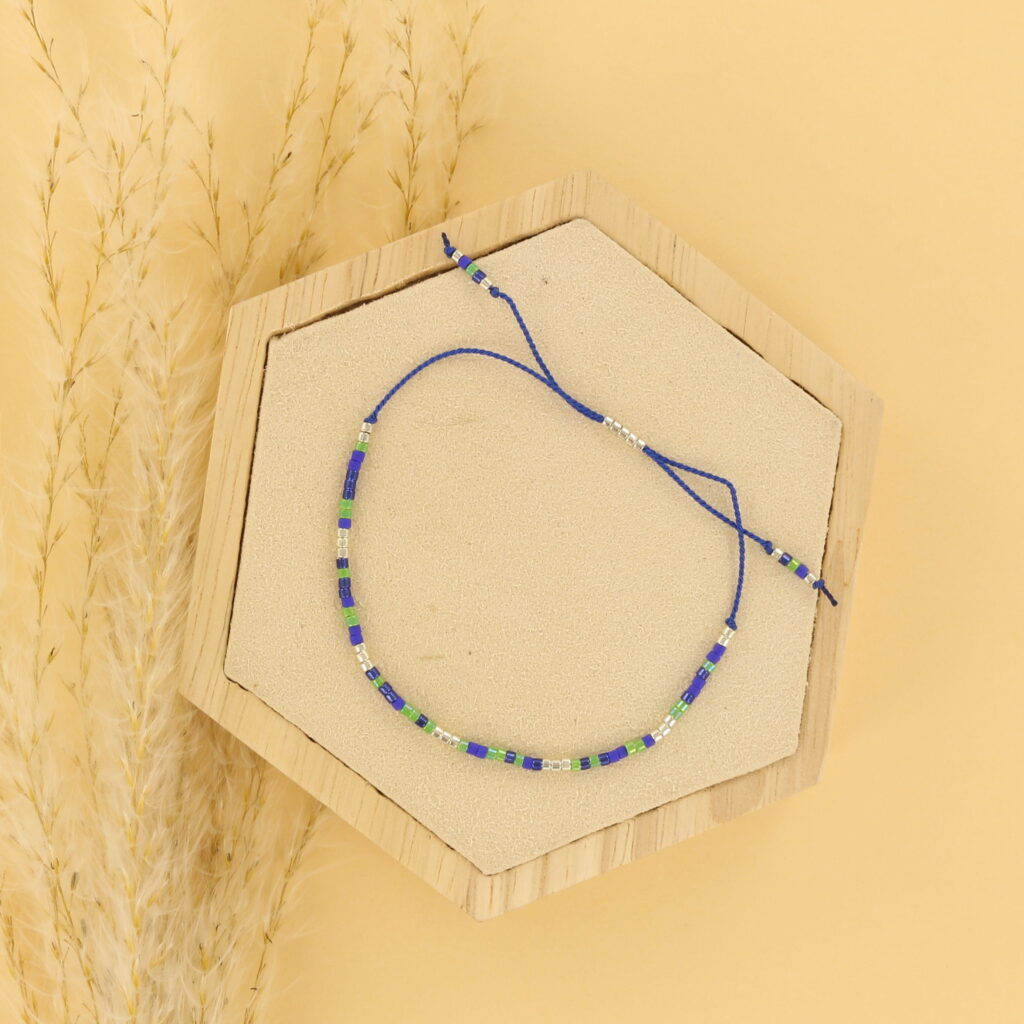If you’re new to the world of Miyuki beads, it can sometimes be difficult to get a good overview of what you need for your creation. Miyuki is a brand known for its high-quality seed beads and delica beads, produced in Japan. On this page, you’ll find comprehensive information to help you get started with beading. Whether you’re unsure about which size or material is best for your project, we hope you’ll be fully informed after reading this page!
Diffrent shapes Miyuki beads
Miyuki Delica

A Delica bead is a cylindrical bead. The thickness of the bead is the same across the entire width. Size 11/0 is the most common size; it’s 1.6 mm high and 1.3 mm wide. The threading hole is 0.8 mm across the entire width. With a Delica, you can easily thread it multiple times, despite its small size.
Different sizes from largest to smallest:
(As you can see, the smallest number is the largest bead size.)
Delica 8/0
Threading hole: 1.2 mm
Length: 3 mm
Width: 2.8 mm
Thickness: 2.8 mm
Delia 11/0 (most commonly used size)
Threading hole: 0.8 mm
Length: 1.6 mm
Width: 1.3 mm
Thickness: 1.3 mm
Delica 15/0
Threading hole: 0.65 mm
Length: 1.3 mm
Width: 1.0 mm
Thickness: 1.0 mm
Suitable techniques for Miyuki delica beads
Peyote stitch even and uneven.
Suitable for bracelets, earrings, rings, amulets and 3D shapes.

Brick stitch
Widely used for earrings, small figures (flowers, animals, symbols) and fringe designs.

Loom weaving (weaving on a bead loom)
The uniform shape allows the Delicas to fit very evenly next to each other.

Herringbone
Especially with Delica, it’s very smooth and even.
Can be used for flat bracelets, earrings, or three-dimensional shapes.

Stringing
Nice narrow bracelets where the beads flow perfectly into each other.

Bead embroidery (embroidery with beads)
Their precision makes Delicas perfect for embroidering flat, even patterns in textiles or leather.

Delicas are especially popular for techniques where precision, clean patterns and geometric shapes are important.
Miyuki Rocaille

Seed beads are more round beads. Seed beads 11/0 is the most common size seed beads. A size 11/0 seed bead has a height of 2.1 mm and a width of 1.3 mm. It also has a 0.8 mm threading hole, and you can easily thread this size through the bead multiple times.
Different sizes from largest to smallest:
(As you can see, the smallest number is the largest bead size.)
Seed beads 5/0
Threading hole: 1.8 mm
Length: 3.5 mm
Width: 5 mm
Thickness: 5 mm
Seed beads 6/0
Threading hole: 1.6 mm
Length:3.3 mm
Width: 4.3 mm
Seed beads 8/0
Threading hole: 1 mm
Length: 2.1 mm
Width: 3.1 mm
Seed beads 11/0
Threading hole: 0.8 mm
Length: 1.3 mm
Width: 2.1 mm
Seed beads 15/0
Threading hole: 0.6 mm
Length: 1 mm
Width: 1.6 mm
Thickness: 1.6 mm
Suitable techniques for Miyuki seed beads
Crochet beads
You can use a beading cord to crochet with beads. Especially larger sizes (8/0 and 6/0) are primarily used for this purpose. 11/0 is suitable for those with a little more experience.

Herringbone
The round beads fit nicely into the V-shaped structure.
This creates a more playful effect than with Delica beads.

Fringe
Their round shape makes seed beads dangle very smoothly.
Perfect for earrings, pendants, or decorations on clothing and bags.

Stringing
Widely used in bracelets of all colors and sizes.

Peyote
Peyote even or uneven count. Peyote with a twist.

Right Angle Weave (RAW) or Cubic Right Angle Weave (CRAW)
Seed beads fill the gaps beautifully.
They have a softer look than Delica beads.
Suitable for bracelets, necklaces, and earrings.

Spirals
Cellini spiral: seed beads in different sizes create beautiful wavy effects.

Bead embroidery
Larger and smaller seed beads create beautiful effects in embroidered patterns.
They are often combined around cabochons or as a decorative edge finish.

Netting
Ideal for airy, lacy designs thanks to its round shape.
Often used for necklaces, beaded collars, and floral motifs.
While Delica’s are ideal for clean, graphic patterns, seed beads are great for playful structures, spirals, netting and organic designs.

